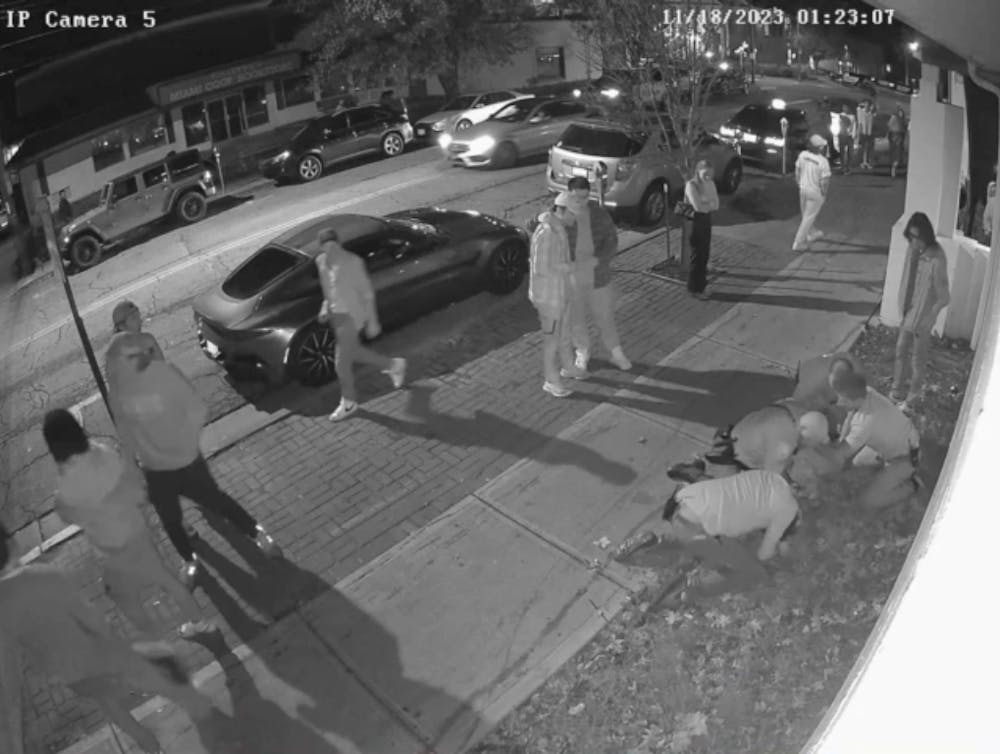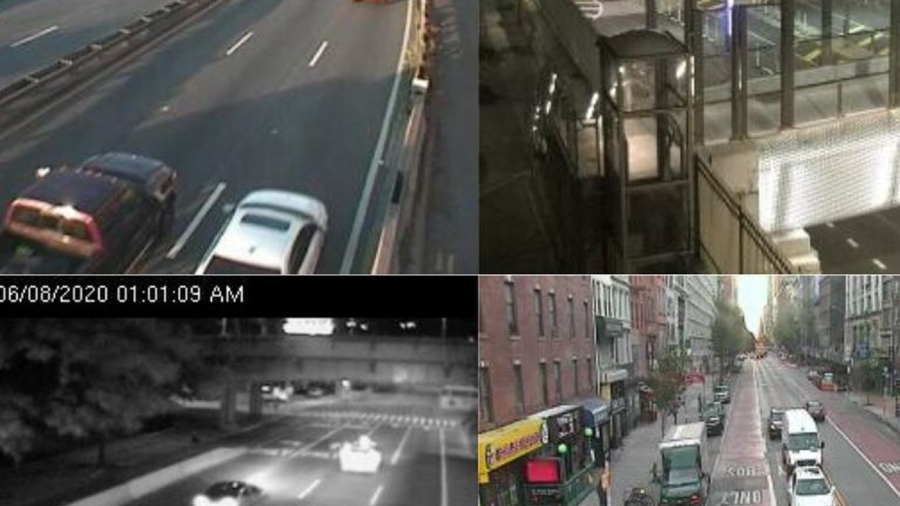How to Get Street Camera Footage? To get street camera footage, contact the local authorities or law enforcement and request access to the footage. Finding street camera footage can be crucial in various scenarios, such as investigations, accident reconstruction, or monitoring public areas for security purposes.
Accessing this footage involves reaching out to the relevant authorities or law enforcement agencies responsible for managing the cameras. By contacting them directly and making a formal request, you can inquire about the process and requirements for obtaining the street camera footage.
This may involve providing specific details about the incident or area of interest, as well as filing a formal request or obtaining a court order if needed. Following the appropriate procedures and engaging with the authorities is essential to legally and effectively obtain street camera footage.
Step 1: Identify The Relevant Camera
Before obtaining street camera footage, it’s essential to identify the specific cameras that cover the area of interest. This step involves thorough research and effective communication with the local authorities.
Research The Area
Begin by researching the area where the incident or event took place. Look for potential camera locations such as traffic lights, public buildings, or commercial properties. You can use online mapping tools to pinpoint the possible camera placements. Pay attention to areas with high foot traffic or crime rates, as these are more likely to have surveillance cameras.
Contact Local Authorities
Reach out to the local police department or municipal offices to inquire about the camera systems installed in the area. Provide specific details about the date, time, and location of the incident or event to narrow down the search. Local authorities can provide valuable information about the types of cameras, their coverage areas, and the procedure for requesting footage.

Credit: kainelaw.com
Step 2: Make A Formal Request
Once you have thoroughly researched and understood the legal process of obtaining street camera footage, the next step is to make a formal request. This involves following the necessary procedures and submitting a written request to the appropriate authority. Here is what you need to know:
Understand The Legal Process
Before diving into making a formal request, it is important to familiarize yourself with the legal process to ensure you comply with all requirements. Each jurisdiction may have different laws and regulations dictating how street camera footage can be obtained, so be sure to gather the necessary information specific to your area. Understanding the legal process will not only make your request more effective but also help you avoid any potential legal pitfalls.
Submit A Written Request
Submitting a written request is a crucial step in obtaining street camera footage. It allows you to provide a formal document outlining your purpose, specific details, and supporting evidence for your request. Here are some key points to consider when submitting your written request:
- Begin by addressing the appropriate authority responsible for handling such requests. This can be a local law enforcement agency, municipality, or any other entity designated to oversee street camera footage.
- Clearly state the purpose of your request, providing a detailed explanation of why you need access to the footage. It is important to emphasize the relevance and importance of obtaining the footage in relation to your specific case or investigation.
- Include specific details such as the date, time, and location of the incident or event captured by the street camera. This helps the authority narrow down their search and locate the requested footage more efficiently.
- Attach any supporting evidence that strengthens your case or justifies the need for the street camera footage. This can include witness statements, police reports, or any other relevant documents that support your request.
- Provide your contact information, including your full name, address, phone number, and email, so that the authority can easily reach out to you if they require further information or have any updates regarding your request.
- Close your written request with a polite and professional tone, expressing gratitude for their consideration and cooperation. Remember to sign and date the document to ensure its authenticity.
Remember, being respectful and adhering to the established legal procedures will greatly increase the chances of your request being approved. By understanding the legal process and following the guidelines for submitting a written request, you are one step closer to obtaining the street camera footage you need for your case or investigation.
Step 3: Provide Necessary Information
Step 3: Provide the necessary information to secure street camera footage. Ensure a smooth process by following these guidelines and providing all the required details in a concise manner.
When it comes to obtaining street camera footage for your investigation, providing accurate and specific incident details is crucial. This step ensures that the authorities can pinpoint the exact footage you need to review. Additionally, including the relevant time and date will help streamline the process. To assist you further, here are two factors to consider when providing the necessary information.
Provide Specific Incident Details
To obtain street camera footage effectively, it is essential to provide specific incident details. In your report or request, include a clear description of what transpired. For example, if you are investigating a hit-and-run accident, be sure to mention the make and model of the vehicles involved, the exact location of the incident, and any identifiable features that could aid in identifying the responsible party. Sometimes, it might be helpful to sketch a diagram illustrating the incident or provide any relevant photos or screenshots that could aid in confirming the specific details. Remember, the more specific you are, the better your chances of getting the right footage.
Include Relevant Time And Date
Another crucial piece of information to include is the relevant time and date of the incident. Providing an accurate time and date allows the authorities to narrow down the footage they need to review. If possible, specify the approximate time when the incident occurred or provide a time range if the exact time is unknown. Make sure to include the relevant date as well. When providing the time and date, it may be helpful to consider any factors that could influence the accuracy of the footage. For instance, if the incident occurred during nighttime, mentioning this detail can help authorities search for footage captured by cameras equipped with night vision capabilities. Being as precise as possible with the time and date will increase the chances of obtaining the required footage promptly. To recap, when requesting street camera footage, providing specific incident details and including the relevant time and date will greatly assist the authorities in locating the footage you need. Remember to be as accurate and detailed as possible to streamline the process and improve your chances of obtaining the footage efficiently.
Step 4: Follow Up On The Request
Once you have submitted your request for street camera footage and received a confirmation from the authorities, the next step is to follow up on the request. This step is crucial to ensure that you obtain the necessary footage for your specific purpose. Below, we’ll cover the important aspects of following up on your request.
Keep Track Of The Request
Keeping track of your request is essential to ensure that it is being processed in a timely manner. Create a tracking system to monitor the progress of your request, including the date of submission, any communication received from the authorities, and the expected timeline for obtaining the footage. This will help you stay organized and informed throughout the process.
Contact The Authorities If Necessary
If you haven’t received a response within the expected timeframe or if there are any delays in obtaining the footage, it may be necessary to contact the authorities for an update. Politely reach out to the relevant department or individual handling your request and inquire about the status of your application. Clear communication can help expedite the process and ensure that your request receives the attention it requires.
Step 5: Review The Footage
In Step 5 of obtaining street camera footage, it is essential to review the gathered footage thoroughly. This process ensures that all necessary evidence is captured and aids in the investigation process.
Now that you have successfully obtained permission to access the street camera footage and analyzed it, it’s time to review the footage. This critical step allows you to gather the necessary evidence or information you need for your specific purpose. Here’s how to effectively review the footage:
Obtain Permission To Access The Footage
Make sure you have obtained proper permission to access the street camera footage. This is usually done by reaching out to the appropriate authorities, such as the local police department or municipal office. You may need to provide a valid reason for your request, such as investigating a crime or gathering evidence for a legal matter. Once you have the necessary permission, you can proceed to review the footage.
Analyze The Footage
Before diving into the details of the footage, take a moment to familiarize yourself with the layout of the camera’s field of view. This will help you identify key areas where the incident you are interested in might have occurred. Also, pay attention to the time and date stamps on the footage to ensure you are reviewing the correct period. When reviewing the footage, pay close attention to any relevant events or incidents that align with your objective. Look for any suspicious activities, individuals, or vehicles that might be connected to the incident you are investigating. Take note of any distinct features or characteristics that could help in identifying people or objects captured in the footage. Consider creating a system to organize and categorize the footage based on different factors such as time periods, locations, or relevant events. This will make it easier to navigate through the footage and locate specific incidents or moments of interest.
Conclusion
By adhering to these steps, you can effectively review street camera footage and gather essential evidence or information. Remember to always follow the proper legal procedures and guidelines when accessing and using this footage. By doing so, you can maximize its potential in achieving your desired outcome.

Credit: www.youtube.com
Tips For Success
When trying to obtain street camera footage for your investigation or security purposes, it’s important to follow some key tips for success. Being clear and concise in your request, and being patient and persistent in your efforts, can greatly increase your chances of obtaining the valuable footage you need. Let’s dive into these tips in more detail below.
Be Clear And Concise In Your Request
When requesting street camera footage, clarity and conciseness are crucial in effectively communicating your needs. The individuals responsible for providing the footage are often managing a multitude of requests, so it’s important to make yours stand out.
Here’s how you can be clear and concise:
- Clearly state the date, time, and location of the incident you are seeking the footage for.
- Provide a brief description of the incident, highlighting any specific details that might be helpful in locating the relevant footage.
- Include your contact information, making it easy for the camera operator or administrator to follow up with any questions or to provide the requested footage.
Remember, the key is to make your request as easy to understand and process as possible. By doing so, you increase the likelihood of a favorable response.
Be Patient And Persistent
Getting street camera footage can sometimes require patience and persistence. Camera operators and administrators may have limited resources or strict privacy regulations to adhere to, which can delay the process.
Here’s how you can be patient and persistent:
- Wait for a reasonable amount of time before following up on your initial request. Understand that it might take some time for the necessary clips to be retrieved or reviewed.
- If you haven’t received a response, consider reaching out again. Politely inquire about the status of your request and offer any additional information or clarifications if needed.
- Stay organized by keeping track of your requests, including dates and contact information. This will help you follow up effectively and reference previous communications if necessary.
By being patient and persistent, you demonstrate your commitment and importance of the requested footage. This can help motivate camera operators or administrators to prioritize your request.
Legal Considerations
When you are hoping to obtain street camera footage for a particular purpose, it is crucial to consider the legal aspects involved. Understanding the privacy laws and consulting with legal professionals are essential steps to ensure that you are complying with the regulations and protecting the rights of individuals. Paying attention to the legal considerations will help you navigate the process effectively and avoid any potential legal issues.
Understand Privacy Laws
It is important to have a clear understanding of the privacy laws that govern the use of street camera footage. These laws vary by location, so it is crucial to research and familiarize yourself with the specific regulations in the area where you intend to obtain the footage. Ensure that you are aware of the restrictions on capturing and using footage of individuals in public spaces to avoid any violations.
Consult With Legal Professionals
Seeking guidance from legal professionals can provide valuable insights into the legal implications of obtaining street camera footage. Consulting with lawyers who specialize in privacy and surveillance laws can help you make informed decisions and ensure that your actions are in compliance with the legal requirements. Legal experts can offer tailored advice based on the specific circumstances of your situation, thereby minimizing potential risks.

Credit: www.miamistudent.net
Frequently Asked Questions On How To Get Street Camera Footage
How Do I Access Traffic Camera Footage In Texas?
To access traffic camera footage in Texas, visit the Texas Department of Transportation website. Navigate to the “Traffic Cameras” section to view live feeds and archived footage. There, you can select specific locations and highways to access the relevant camera footage.
Can Insurance Ask For Camera Footage?
Yes, insurance can request camera footage as part of their investigation.
How Do I Access Traffic Camera Footage In California?
To access traffic camera footage in California, you can visit the official website of the California Department of Transportation. On the website, look for the “Traffic Cameras” section, where you will find a map displaying the locations of available camera feeds.
Simply click on a camera icon to view the live footage.
Are Traffic Cameras Legal In Texas?
Yes, traffic cameras are legal in Texas and are used for enforcing traffic laws.
How Can I Access Street Camera Footage?
To access street camera footage, you can reach out to the local law enforcement or city officials for guidance and the appropriate channels to follow.
What Are The Legal Rights To Street Camera Footage?
The legal rights to street camera footage vary by jurisdiction. Typically, it is owned by the relevant authorities, and access may require proper authorization or a valid reason.
Conclusion
Obtaining street camera footage can be a valuable resource for various purposes. The process involves understanding legal regulations, obtaining necessary permissions, and effectively utilizing the footage. By following the guidelines provided in this blog post, you can ensure that you are able to access and leverage street camera footage effectively for your specific needs.
